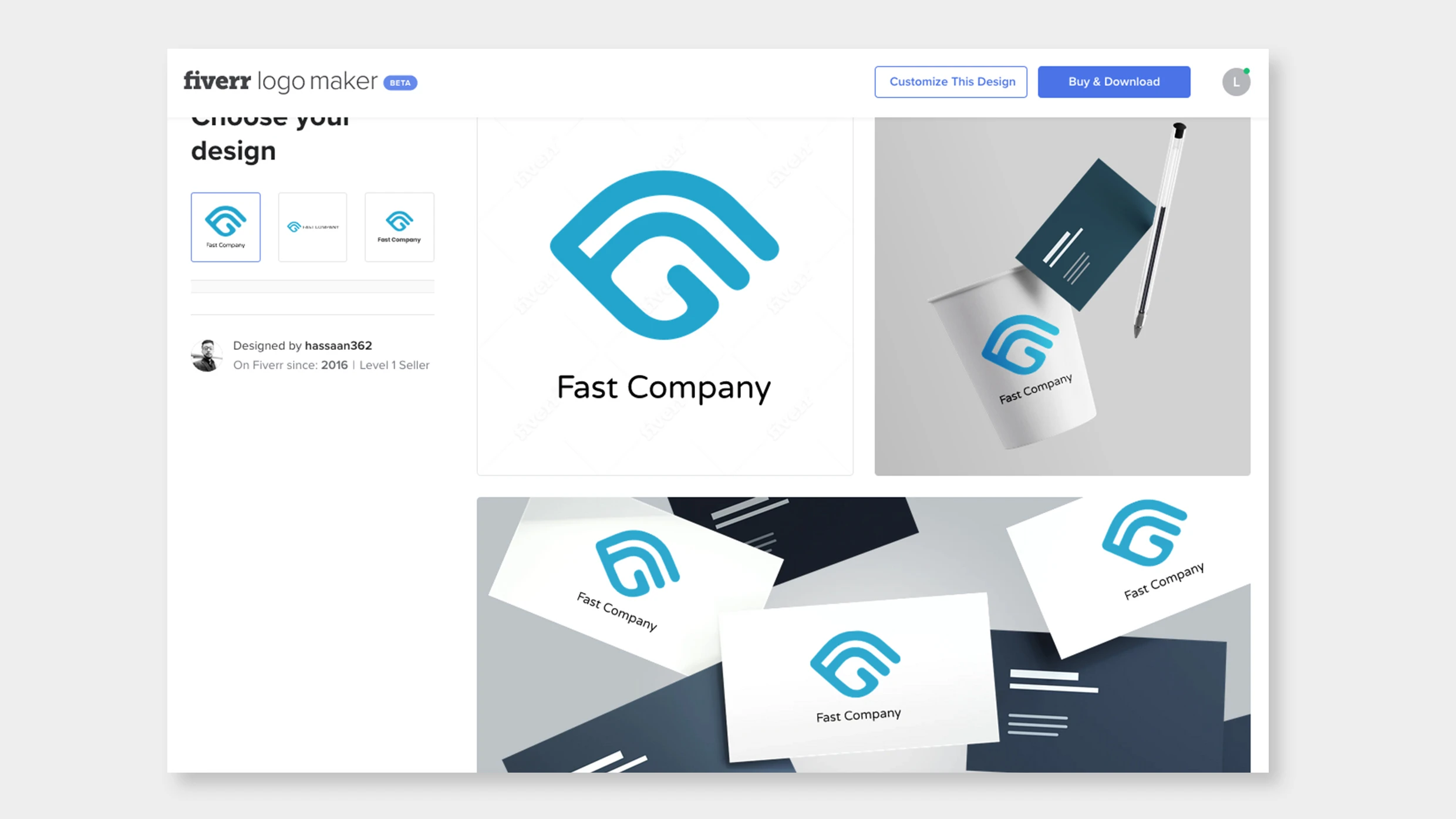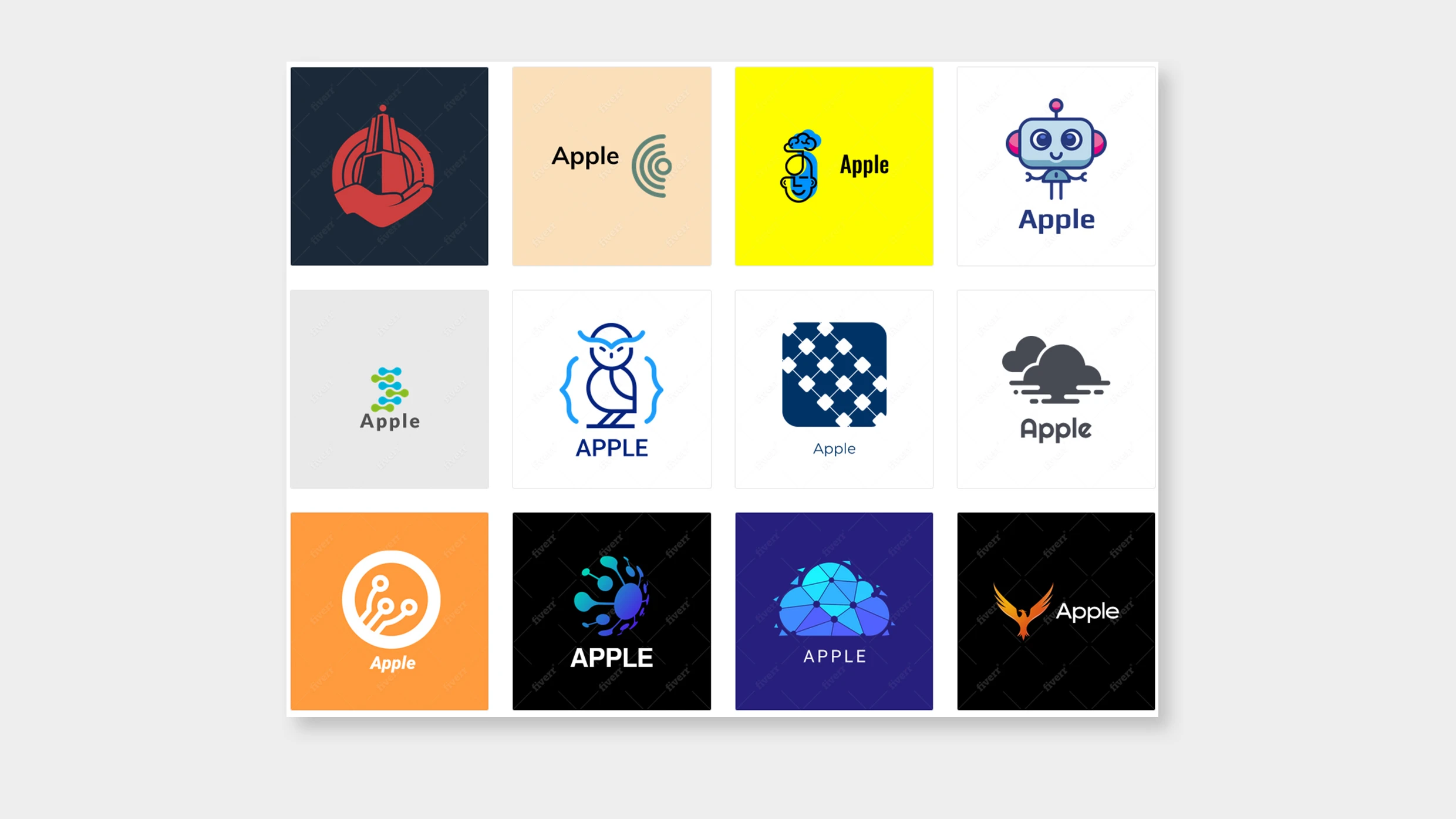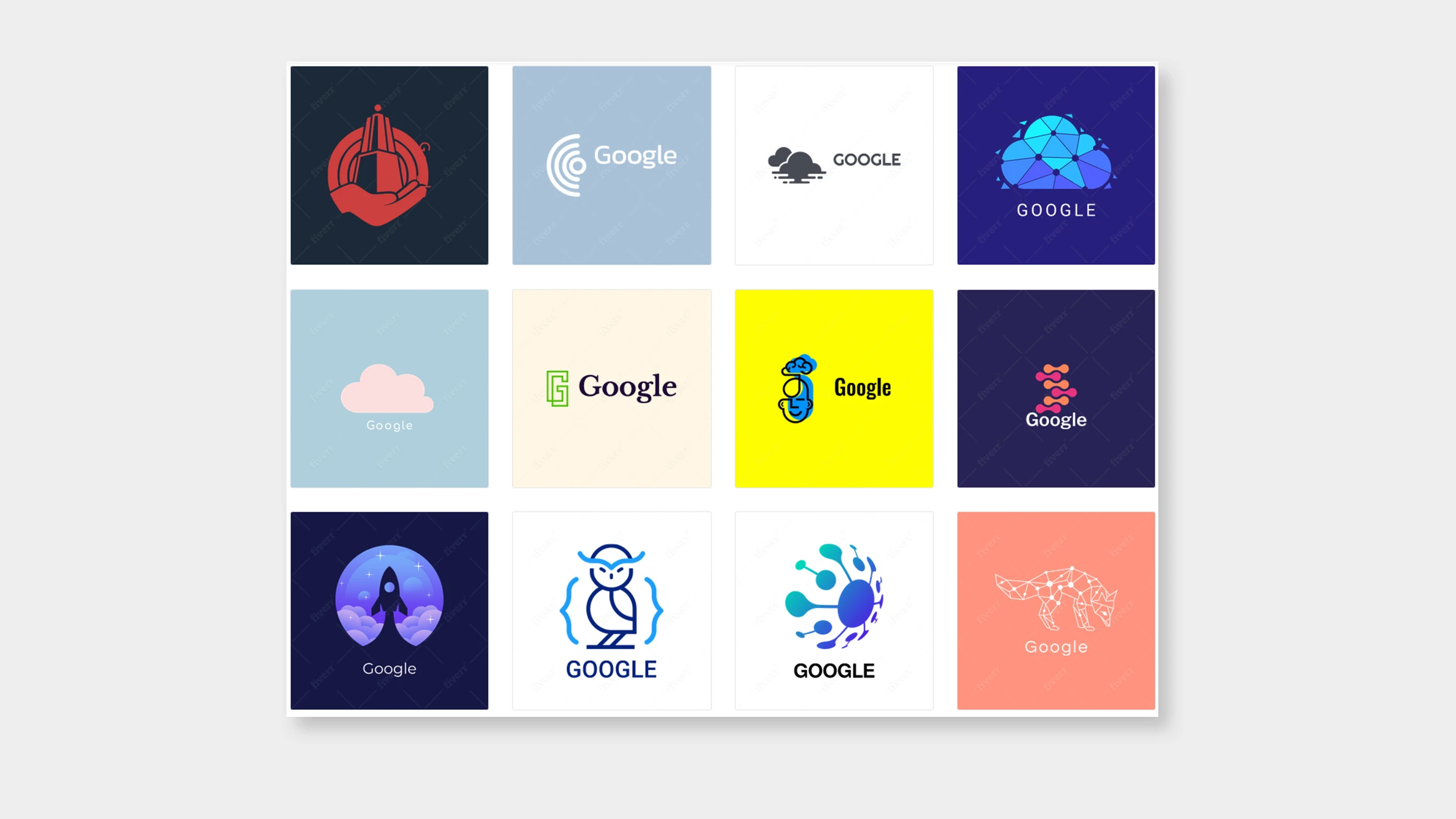Hey everyone, just a quick note to let you know that your job as a designer is still safe from an AI takeover. Apologies for any confusion. As it turns out, automated systems still have some work to do in the creativity department.

That’s at least based upon a new Logo-Maker tool just launched in beta by Israel-based freelance marketplace Fiverr. The tool claims to be able to “make a professional logo in just a few clicks,” using artificial intelligence, so we put it to the test and used the tool to create some alternate logos for today’s biggest brands, including Apple, Google, McDonald’s, Uber, and even our own Fast Company logo, just for good measure. Surprise! The designs are every bit as generic as you might expect.

To craft a logo, the user chooses up to three industry keywords from a list to clue the AI into the industry your business is in. There was no “technology” industry option, so let’s just say it was a bit difficult to properly describe Apple or Google. I tried to make up for this with the subsequent general keyword textbox, where the user can input any keyword they want.
Next, the user toggles between a range of options on a scale to define the look and feel of the brand. (Is it more “classic” or “modern”? “Fun” or “serious”? “Traditional” or “innovative”?) Click a button to finish, and in a matter of seconds a screen full of logo options awaits. According to Gali Arnon, chief marketing officer of Fiverr, the logos were made by designers “hand-picked” from the Fiverr community for the quality of their work. Some have agency backgrounds, and others are Fiverr Pro sellers with “years of experience.”

But just because logos were made by trained designers doesn’t mean that using a logo-generating tool provides the same result as actually working with a trained designer. The results generated the same generic logomark—a line drawing of a head with a cloud above it—for Fast Company, Apple, and Google, even though the parameters I chose were different. One of Uber’s logo options has an image of a taxi. Not sure how the brand would feel about that.
Simply put, the results don’t come anywhere near what an agency would come up with to communicate a brand and its values. (The logo maker will better match a user’s visual preferences and learn about the design aesthetics of individual industries as people continue to use it, Arnon says.)

Arnon acknowledges that the tool isn’t meant to replace the longer-term, more personal service a company would receive by working directly with an agency: “This product is for businesses who want a fast DIY solution to making a logo.” And obviously most big companies like Apple and Google wouldn’t use a service like this because they have a discretionary budget to hire an agency. The simple question is what a small business will give up for the sake of expediency or value.
There’s a common myth that AI will replace the modern worker in a blanket kind of way. But it misunderstands the fact that while machines are skilled at performing repetitive tasks, they still have a long way to go when it comes to producing artistic or creative solutions because their input (or, say, raw material) is empirical data, without an understanding of its context or what it actually means. A machine reaches a solution by aggregating data and finding repetitive patterns; a sort of brute force approach to design that doesn’t have the idiosyncratic nuance and critical thinking an actual designer has. As this AI-powered logo generator proves, you just can’t automate creativity.
Recognize your brand’s excellence by applying to this year’s Brands That Matter Awards before the early-rate deadline, May 3.